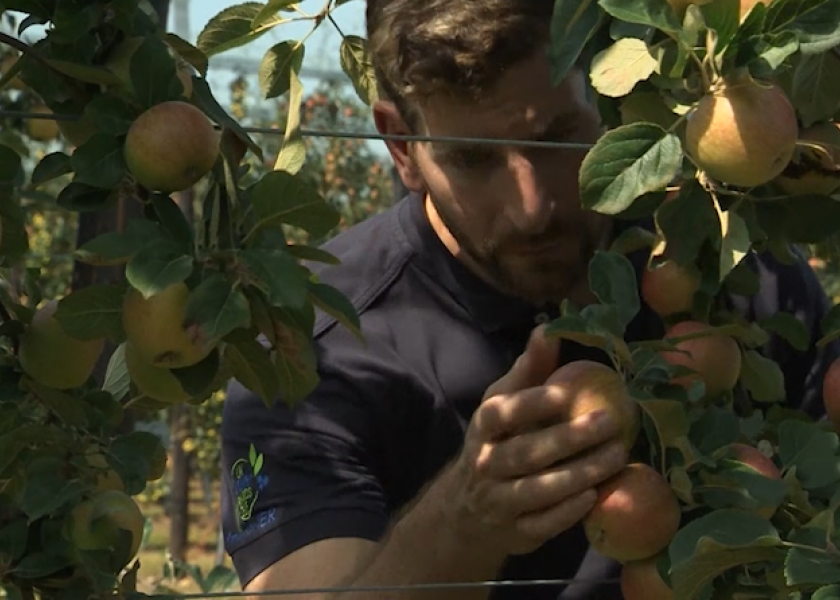Tight labor market forces tough choices for growers

Higher labor costs are squeezing fruit and vegetable growers and forcing them to respond by automating, borrowing foreign labor or moving production out of the U.S.
The 28-page report, called Adjusting to Higher Labor Costs in Selected U.S. Fresh Fruit and Vegetable Industries, was authored by Linda Calvin, Philip Martin and Skyler Simnitt.
The report looks at how U.S. producers of selected labor-intensive fresh fruit and vegetables are addressing the rising costs of labor.
Labor is a big cost for fresh produce growers. In 2017, labor’s share of total operating expenses was 38.5% in fruit and tree nut production and 28.8% in vegetable and melon production, the report said.
The study said farm labor costs increased from 2010-2019 because of fewer newly arrived, unauthorized workers; rising state minimum wages; and new requirements to pay overtime wages to some farmworkers.
The authors said most workers employed on U.S. crop farms were born in Mexico, and the U.S. Department of Labor’s National Agricultural Worker Survey shows that U.S. crop farms employ aging workers, a large share of whom are unauthorized immigrants.
“The population of unauthorized immigrants within the U.S. declined by 28%, or 1.7 million people, between 2012 and 2019, which will likely negatively affect the supply of farm workers in the U.S. given the prevalence of unauthorized immigrants employed within the agricultural sector,” the authors said.
In the face of shortages, the authors said short-term options to meet the labor needs on farms include management changes, such as picking fields and orchards less often and introducing mechanical aids that increase worker productivity.
Longer term, the study said growers are adjusting to rising farm labor costs in fruit and vegetable production by:
- Labor-saving mechanization, such as mechanical harvesters that replace labor. In addition, other mechanical aids, such as autonomous carts that move harvested product to the sides of fields, help make workers more efficient, the report said.
- Using H-2A guest workers to fill jobs when domestic workers in the U.S. cannot be found. The authors said workers admitted under the expanding H-2A program now fill 10% of the year-round equivalent jobs in U.S. crop agriculture.
- Reducing domestic production of crops that are not competitive with imports from lower wage countries.
The report said “next steps” may vary by commodity produced.
“The uncertainties surrounding the three, long-term options in response to rising farm labor costs of machines, migrants and imports encourage some growers to invest in all three options until the optimal strategy for a particular commodity becomes apparent,” the authors said.







